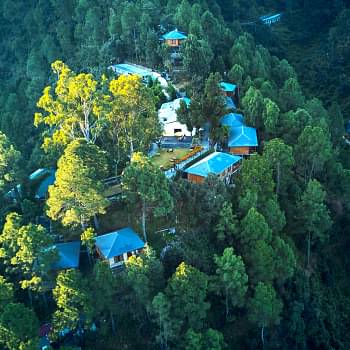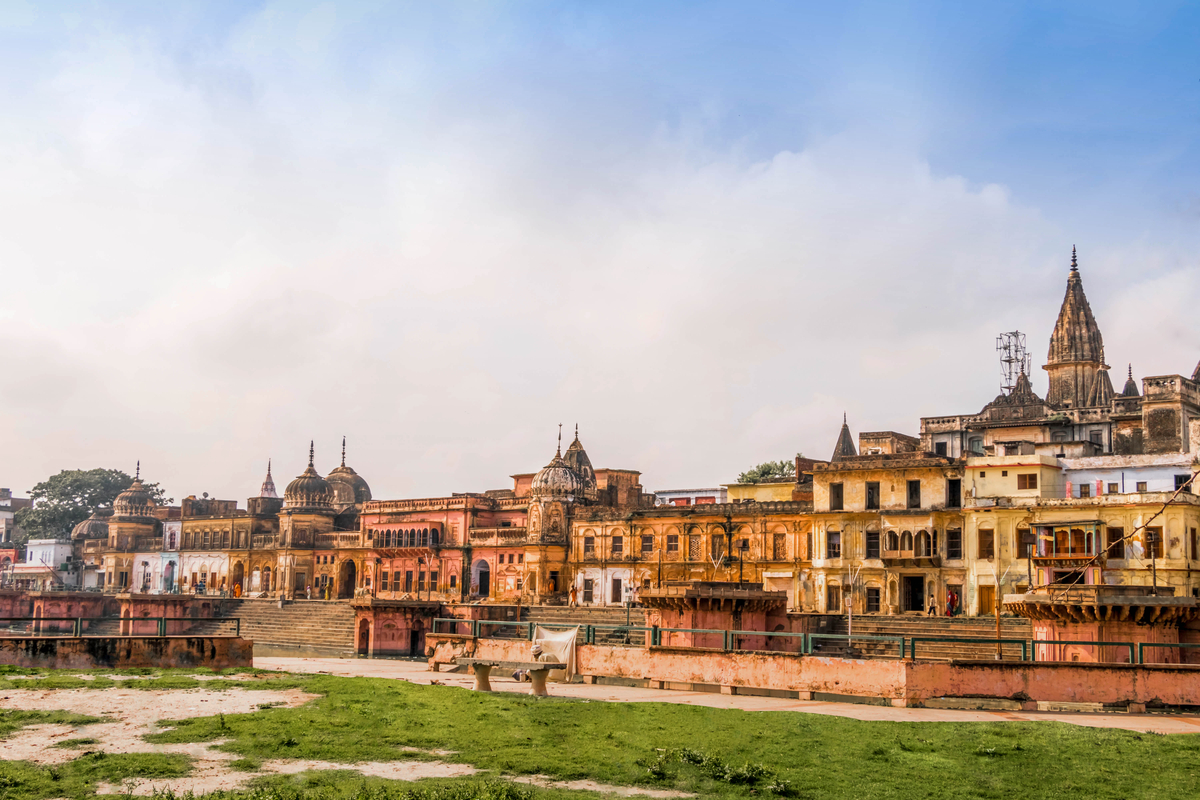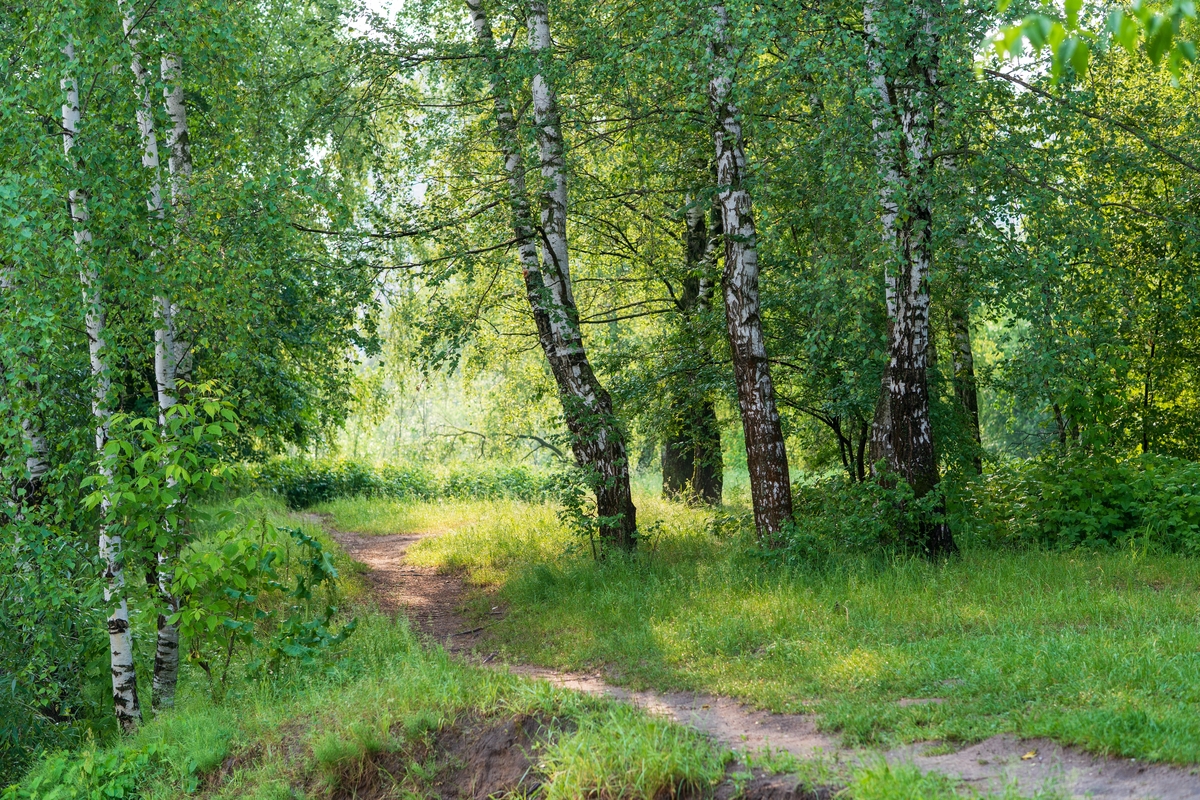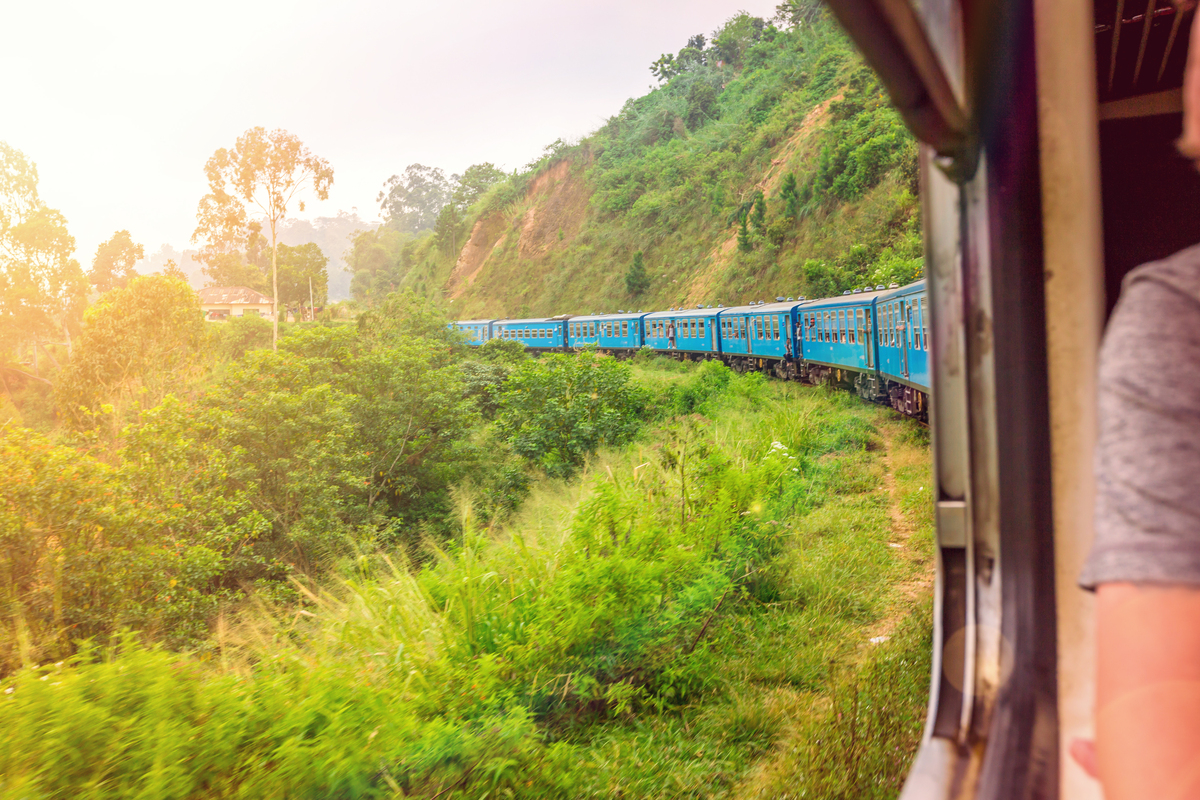September 30, 2025
Ramji Vanvas Route: A Spiritual Trail with Scenic Wonders
CM Content Team


View all
140+
Resorts
September 30, 2025
CM Content Team
For centuries, the tale of Lord Rama has transcended time, faith, and geography. Among its most compelling chapters is the vanvas 14-year exile. This journey, rich with trials, wisdom, and divine intervention, is not only a foundational part of the Ramayana but also a spiritual path that continues to inspire millions.
The Ramji Vanvas Route, also known as the Ram Van Gaman Path, is more than a mythical trail. It's a symbolic and geographical journey through India's forests, rivers, mountains, and towns. As this sacred path is being revived, it offers travellers more than a spiritual connection; it invites them to witness the untouched beauty of nature. From tranquil riverbanks and dense green landscapes to historic caves and rolling hills, every stop along this route is a story waiting to be experienced.

The modern Ram Van Gaman Path has been envisioned to trace this route across multiple Indian states and into Sri Lanka. More than 240 places have been linked to the journey, and several of them are being developed as heritage, pilgrimage, and cultural sites.
Here are some of the most important stretches:
Ayodhya is the sacred birthplace of Lord Rama and the cradle of his divine legacy. It marks the beginning of his 14-year exile, not as a retreat, but as a noble acceptance of destiny. Here, the journey begins not with anger or vengeance, but with calm dignity, unwavering resolve, and a deep sense of dharma. The farewell to the royal palace, the tearful parting with his people, and Rama’s composed departure set the spiritual tone for the epic path ahead.
As Rama travels southward, he arrives at Prayagraj, the sacred confluence of the Ganga, Yamuna, and the mystical Saraswati, a place revered for spiritual cleansing and divine energy. It is here that he meets enlightened sages who not only welcome him but offer profound insights into the cosmic nature of his exile. Their wisdom helps Rama connect his personal sacrifice to a larger, divine mission, the purification of the self, the cleansing of karma, and the preservation of dharma for generations to come.
This tranquil, forested region is where Rama, Sita, and Lakshmana built their first hermitage, surrounded by the serene beauty of nature. Here, they embraced a life of simplicity and spiritual reflection, living in perfect harmony with the wilderness. They met revered sages like Atri and Anasuya, whose wisdom deepened their understanding of dharma. It’s in Chitrakoot that Bharata, overwhelmed with grief and love, journeys to meet Rama and pleads for his return to Ayodhya.
Spanning present-day Madhya Pradesh, Chhattisgarh, and parts of Odisha and Maharashtra, Dandakaranya was a sacred forest filled with sages, ashrams, and lurking rakshasas. Here, Rama met Shabari, whose unwavering devotion touched his heart. This landmark marked the turning point, from a peaceful exile to a purposeful mission. It was in these wild woods that the warrior in Rama truly awakened.
Located in present-day Nashik, Panchavati is where Rama’s exile took a dramatic and fateful turn. It was here that Sita was abducted by Ravana, shifting Rama’s journey from spiritual retreat to a battle for justice. The deceit of the golden deer, the severing of Surpanakha’s nose, and Jatayu’s brave attempt to save Sita all unfolded in this sacred land. Panchavati marks the moment where divine destiny began to take its full form.
Near modern-day Hampi, this region, identified as Kishkindha, is where Rama met Hanuman and Sugriva, marking a pivotal chapter in his journey. Amidst ancient hills and flowing rivers, a divine alliance was forged, rooted in trust, loyalty, and shared purpose. It was here that friendships were sealed, promises made, and the search for Sita began in earnest.
With the help of the devoted Vanara army, Rama built a bridge across the mighty ocean, the legendary Ram Setu, to reach Lanka. Before this divine crossing, he paused at Rameshwaram to worship Lord Shiva, seeking strength and blessings. This act of devotion established one of India’s most sacred pilgrimage sites. Rameshwaram thus became a symbol of faith, courage, and divine resolve.
The journey culminated in Lanka, where Rama defeated the mighty Ravana and rescued Sita, bringing an end to her long captivity. But even in victory, Rama displayed restraint, mercy, and unwavering commitment to justice, reinforcing the values he lived by. He crowned Vibhishana as the rightful king, restoring peace to the land of Lanka.

Though millennia have passed, the route of Rama’s exile resonates profoundly even today. It represents:
Whether you’re a pilgrim, a history lover, a nature enthusiast, or simply curious, exploring the Ramji Vanvas Route can be a profound experience. Here are a few practical insights:

Ayodhya International Airport (Maharishi Valmiki International Airport) is the newest and most convenient way to reach the city. It is located around 8–10 km from the main town.
The airport is currently connected to major cities like Delhi, Mumbai, and Varanasi, with more routes expanding rapidly. Alternatively, Lucknow Airport (approx. 135 km away) serves as a secondary option, with road or rail connectivity to Ayodhya.
Ayodhya is well-connected by rail through Ayodhya Junction and Ayodhya Cantt Railway Station.
Ayodhya is accessible via a network of national and state highways.
Roads are generally well-maintained, with dhabas and rest stops along the way.
Praveg Tent City Ayodhya Brahma Kund is a tented resort located near the Ram Janmabhoomi temple in Uttar Pradesh. It offers well-maintained, air-conditioned tents with essential amenities in a peaceful and spiritual setting. Guests can experience traditional vegetarian meals and evening cultural programs. This resort in Ayodhya provides comfort, convenience, and a close connection to Ayodhya’s heritage.
Club Mahindra membership offers unforgettable vacations with access to over 140+ Club Mahindra resorts worldwide. With premium stays in exotic destinations across India and beyond, members can enjoy diverse experiences, from serene beaches to majestic mountains. The membership ensures 25 years of exotic, flexible holidays, perfectly tailored for families. It’s a gateway to hassle-free, memorable getaways year after year.
Here’s a suggested 10-day route for first-time travellers eager to explore the sacred journey of Lord Rama. This itinerary blends spirituality, history, and natural beauty, offering a meaningful experience through some of the most significant stops along the Ram Van Gaman Path.
Begin your journey in the sacred city of Ayodhya, the birthplace of Lord Rama. Visit the revered Ram Janmabhoomi, take a peaceful walk along the Sarayu ghats, and explore ancient temples echoing with devotion. Soak in the spiritual energy of the city as you prepare for the path ahead.
Travel to Prayagraj, where the Ganga, Yamuna, and Saraswati rivers converge. Witness the divine Triveni Sangam, considered one of the holiest sites in India. Visit ancient ashrams and temples that preserve centuries of Vedic wisdom and experience the quiet power of this sacred meeting point.
Journey into the peaceful forests of Chitrakoot, where Rama, Sita, and Lakshmana spent the early years of exile. Visit Gupt Godavari, Ramghat, and Kamadgiri, and take time to absorb the spiritual stillness of the hills. This is a place for inner reflection and connection with Rama’s early vanvas life.
Head deeper into the heart of Rama’s exile, the Dandakaranya forest region. Explore areas filled with tribal traditions, sacred groves, and ancient ashrams. Interact with local communities and immerse yourself in the raw, untouched landscapes that once echoed with Rama’s footsteps.
Arrive in Nashik, home to the sacred land of Panchavati, where the narrative of Rama’s exile took a decisive turn. Visit Sita Gufa, Kapaleshwar Temple, and other significant sites. Reflect on the trials faced here, from the golden deer to Jatayu’s sacrifice, and how they shaped Rama’s destiny.
Conclude your journey with a quiet day of reflection. Whether beside a river, in a forest resort, or at a temple, allow yourself time to absorb the profound experiences of the path. Rest in the peaceful surroundings, letting the spiritual essence of the Ram Van Gaman Path settle within you before returning home.
The Ramji Vanvas Route is not just a trail through India’s forests and rivers; it’s a path through the soul of civilisation. Every bend in the road, every shrine and tree and story, echoes the timeless values of courage, devotion, humility, and righteousness. Walking this route, even if just through stories or thoughts, reminds us that exile is not always punishment. Sometimes, it is preparation. And like Rama, each of us is on a journey, through choices, trials, moments of despair, and finally, illumination.
Whether you walk this route in person or in spirit, may it guide you toward your own truth, just as it guided Rama toward his destiny.
Mahindra Holidays & Resorts India Ltd. (MHRIL), a part of Leisure and Hospitality sector of the Mahindra Group, offers quality family holidays primarily through vacation ownership memberships and brings to the industry values such as reliability, trust and customer satisfaction. Started in 1996, the company's flagship brand ‘Club Mahindra’, today has over 300,000 members , who can holiday at 140+ resorts in India and abroad.
We use cookies to personalise content and to provide you with an improved user experience.By Continuing to browse this site you consent to the use of cookies.Please visit our cookie policy for further details.

Welcome to ClubMahindra.com In order to provide a personalised experience for you, we use cookies to enable some website functionality. Cookies help us see which articles most interest you; allow you to easily share articles on social media channels; permit us to deliver content personalised to your interests and locations; along with many other site benefits. For more information, please review our Cookie Policy
When you visit any website, it may store or retrieve information on your browser, mostly in the form of cookies. This information might be about you, your preferences or your device and is mostly used to make the site work as you expect it to. The information does not usually directly identify you, but it can give you a more personalized web experience. Because we respect your right to privacy, you can choose not to allow some types of cookies. Click on the different category headings to find out more and change our default settings. However, blocking some types of cookies may impact your experience of the site and the services we are able to offer.
Because we respect your right to privacy, you can choose not to allow some types of cookies and you have the right to withdraw your consent by send a mail to email id [email protected]
These cookies are essential in order to enable you to move around the site and use its features, such as accessing secure areas of the site. Without these cookies, services you have asked for cannot be provided.
These cookies allow us to employ data analytics so we can measure and improve the performance of our site and provide more relevant content to you. These cookies don't collect information that identifies a visitor down to an individual level that is available to us. These cookies are not passing personally identifiable information to any external third party other than in limited cases when we engage a service provider to act on our behalf but who is then unable to use the data for their own purposes.
Performance cookies are generally third-party cookies from vendors we work with or who work on our behalf that collect information about your visit and use of the Club Mahindra website, for instance which pages you visit the most often, and if you get error messages from web pages. These cookies don't collect information that identifies a visitor. All information these cookies collect is anonymous and is only used to improve your overall experience on how the website works. Third party vendors may have access to this data and may use it to improve their overall services and offerings.
Functionality cookies allow a site to remember choices you make (such as your user name, language or the region you are in) and provide more enhanced, personal features. These cookies cannot track your browsing activity on other websites. They don't gather any information about you that could be used for advertising or remembering where you've been on the Internet outside our site.
Third-party advertising and social media cookies are used to (1) deliver advertisements more relevant to you and your interests; (2) limit the number of times you see an advertisement; (3) help measure the effectiveness of the advertising campaign; and (4) understand people's behaviour after they view an advertisement. They are usually placed on behalf of advertising networks with the site operator's permission. They remember that you have visited a site and quite often they will be linked to site functionality provided by the other organization. This may impact the content and messages you see on other websites you visit. If you do not allow these cookies you may not be able to use or see certain these sharing tools content on our website.